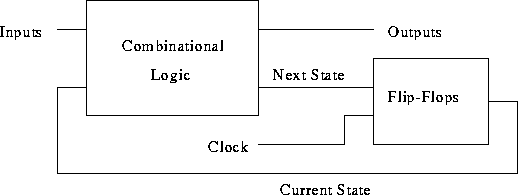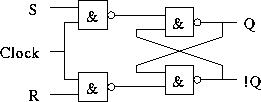There will all be some asynchronous elements in a circuit which interfaces to the real world environment.
Non-overlapping clocks.

This is the basic idea, to be modified for actual use.

Tom Kelliher, CS 220
Oct. 22, 2001
Read 4-3.
Homework due in one week: lab tutorials; complete VHDL problems during the week. For VHDL problems: hand-in VHDL print-out and simulation results from Xilinx tools. Sign-up sheets for workstation time?
Finished introduction to VHDL. See course web page for VHDL code.
There will all be some asynchronous elements in a circuit which interfaces to the real world environment.
Non-overlapping clocks.

This is the basic idea, to be modified for actual use.



Behavior.
Latched when clock is low.
A solution: non-overlapping clocks. (Achieved with master-slave flip-flops.)

(Think of this as a logic primitive.)